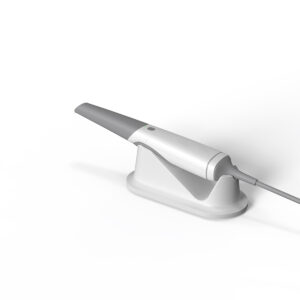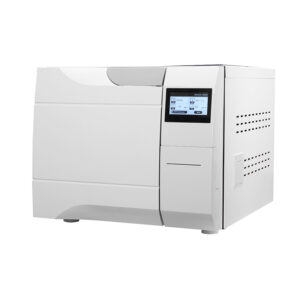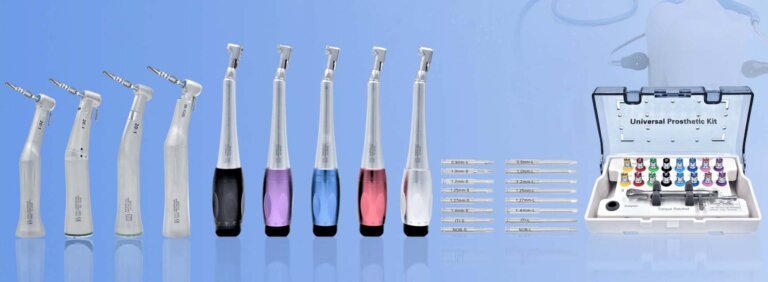Have you ever wondered about that handheld wand-like device your dentist uses during checkups? With a simple sweep across your teeth, it miraculously generates a detailed 3D map of your oral cavity. This technological marvel transforming dental practices worldwide is called the intraoral scanner – a groundbreaking innovation redefining precision and comfort in dental care.
Understanding Intraoral Scanners
An intraoral scanner employs advanced optical imaging technology combined with real-time 3D reconstruction algorithms to capture highly accurate digital impressions of a patient’s teeth, gums, and soft tissues. Unlike conventional methods, this compact device uses structured light or laser triangulation to create micron-level precise models within 2-3 minutes. The scanner’s multiple focal-length lenses and AI-powered software automatically stitch thousands of images into a manipulatable digital model, viewable immediately on chairside monitors.
This technology represents the pinnacle of digital dentistry, offering:
- Unparalleled accuracy (resolution up to 20μm)
- Instant visualization of oral structures
- Dynamic treatment simulation for orthodontics/restorations
- Seamless integration with CAD/CAM systems for same-day crowns
Traditional oral impression taking
Traditional oral impression taking uses the physical pressure formed by alginate impression materials to obtain the intraoral shape, which can easily irritate the pharyngeal palate of patients and often cause nausea and vomiting. In addition, plaster casting is required, and the model may be deformed in the middle link, causing the final restoration to not fit the patient’s mouth.

Why Intraoral Scanners Outperform Conventional Methods
Modern scanners address these limitations through five transformative advantages:
1. Enhanced Patient Comfort
The scanner’s sleek, ergonomic tip (typically 15-20mm wide) eliminates gag reflexes by avoiding deep palatal contact. Pediatric patients and those with severe anxiety particularly benefit from this pain-free approach. A 2022 Journal of Prosthodontics study reported 89% patient preference for digital scans over conventional impressions.
2. Clinical Efficiency
- Time Savings: Complete arch scans now take 90 seconds vs. 8-10 minutes for physical impressions
- Real-Time Adjustments: Dentists can instantly rescan problematic areas instead of repeating entire impressions
- Same-Day Solutions: Integrated milling machines enable crown/bridge fabrication during single appointments
3. Diagnostic Superiority
Advanced scanners like TRIOS 4 (3Shape) or Primescan (Dentsply Sirona) detect subtle pathologies invisible to conventional methods:
- Early enamel cracks (≤0.5mm)
- Subgingival caries
- Microscopic margin discrepancies
- Occlusal interferences through dynamic bite analysis
4. Precision-Driven Outcomes
Digital models achieve 99.7% accuracy in crown margin adaptation compared to 92% for analog methods (International Journal of Dentistry, 2021). This reduces post-cementation complications like microleakage or recurrent decay.
5. Eco-Friendly & Cost-Effective
By eliminating disposable materials and shipping needs, practices reduce waste production by 68% annually. While initial scanner costs range from 20,000to20,000to40,000, long-term savings from reduced remake rates and increased case acceptance often yield ROI within 18 months.

Clinical Applications Reshaping Dentistry
1. Orthodontics
- Invisalign® Integration: Direct scan-to-aligner workflows cut treatment planning time by 40%
- Progress Monitoring: Overlay sequential scans to visualize tooth movement dynamics
- Appliance Fabrication: 3D print retainers/expanders from digital models
2. Restorative Dentistry
- Crowns/Bridges: Biogeneric design algorithms create anatomically optimized prosthetics
- Veneers: Simulate aesthetic outcomes using shade-matching software (e.g., Vita Easyshade® integration)
- Occlusal Analysis: T-Scan® compatibility detects premature contacts in real-time
3. Implantology
- Guided surgery: Merge CBCT data with surface scans for flapless implant placement
- Custom abutments: Design titanium/ceramic components with subgingival margin precision
4. Periodontics
- Gingival recession tracking through volumetric comparisons
- Stent fabrication for controlled tissue grafting
Overcoming Adoption Barriers
Despite clear advantages, some practices hesitate due to:
- Learning Curve: Mastering scanning techniques requires 20-30 practice cases
- Initial Costs: Leasing options (500−500−800/month) help mitigate upfront investments
- Data Security: HIPAA-compliant cloud storage solutions address patient privacy concerns
Pro tip: Start with straightforward cases like night guard scans before progressing to full-arch restorations. Most manufacturers offer hands-on training to accelerate proficiency.
Future Horizons
Emerging advancements promise even greater capabilities:
- AI Diagnostics: Machine learning algorithms that automatically flag caries/calculus
- Augmented Reality: Project proposed treatment outcomes onto patient’s actual smile
- Saliva Compensation: Software that digitally removes moisture interference during scanning
- Biomimetic Design: Prosthetics mimicking natural enamel prism patterns

what is intraoral scanner
A Patient’s Perspective
“I used to dread dental visits because of those awful mold trays. Last week, my dentist used this little camera instead. It felt like they were just taking pictures of my teeth – no gagging, no weird tastes. Best part? They showed me exactly how my new crown would look on the screen. Felt like I was part of the design process!” – Sarah R., 34
Intraoral scanners represent more than just technological progress – they signify a fundamental shift toward patient-centered, environmentally conscious dentistry. By combining unprecedented accuracy with enhanced comfort, these devices are dismantling long-standing barriers to oral healthcare. Whether you’re considering orthodontic treatment, restorative work, or simply pursuing optimal dental health, embracing this digital revolution ensures your care aligns with 21st-century standards.
Next time you visit your dentist, ask about their digital workflow. That brief scan might be your gateway to faster, more precise, and remarkably comfortable dental solutions. After all, in an era where smartphones can map entire cities, shouldn’t your dental care be equally sophisticated?








